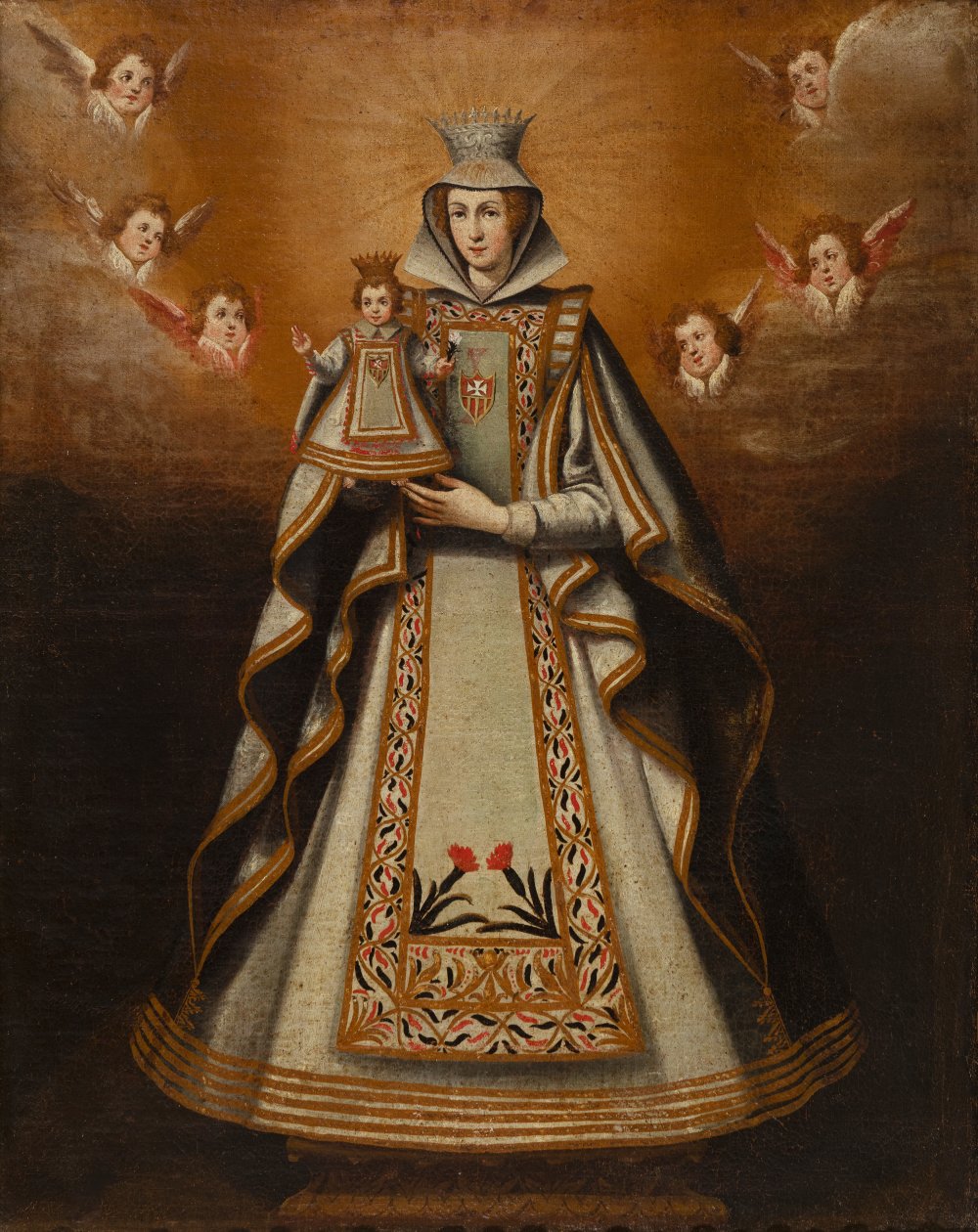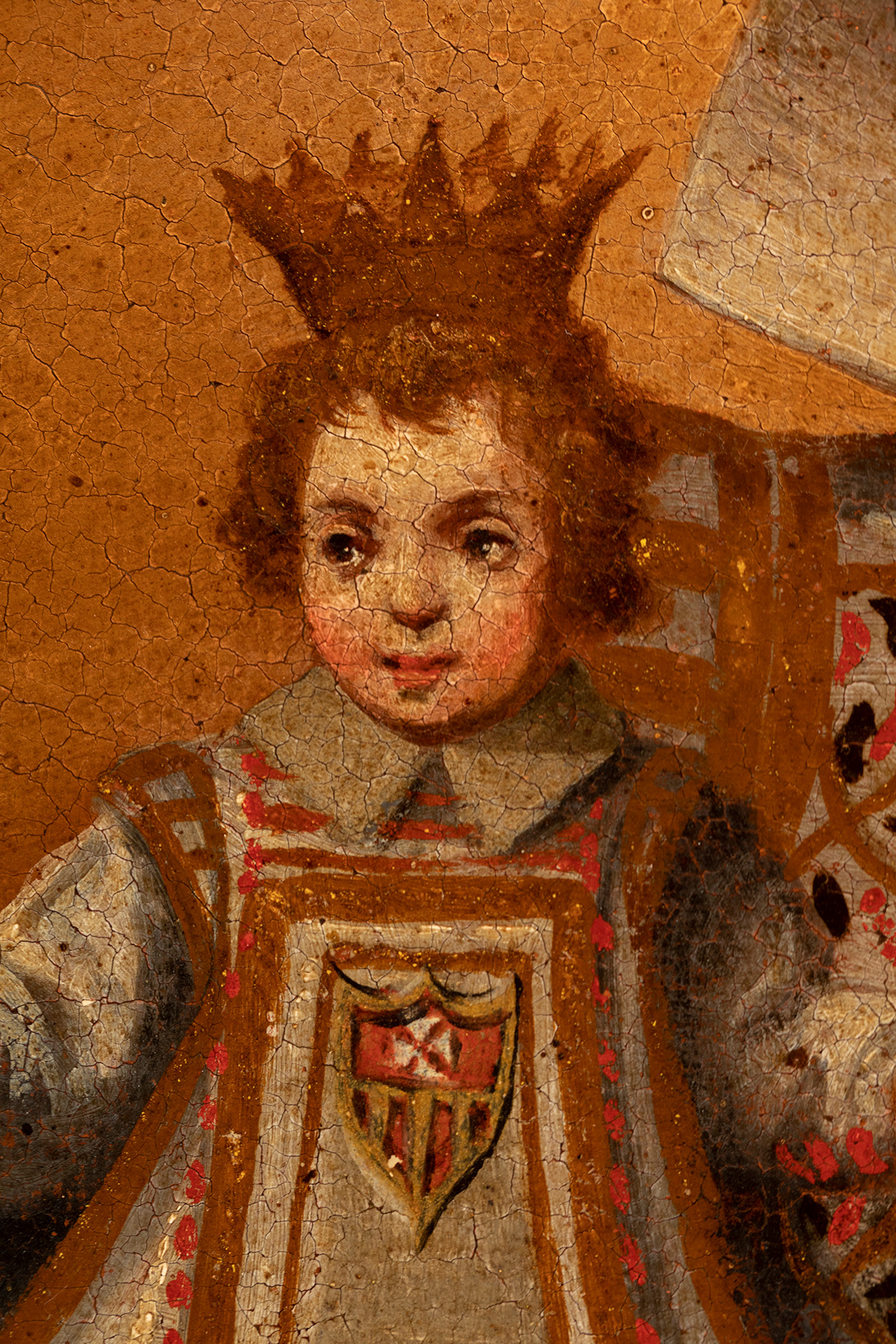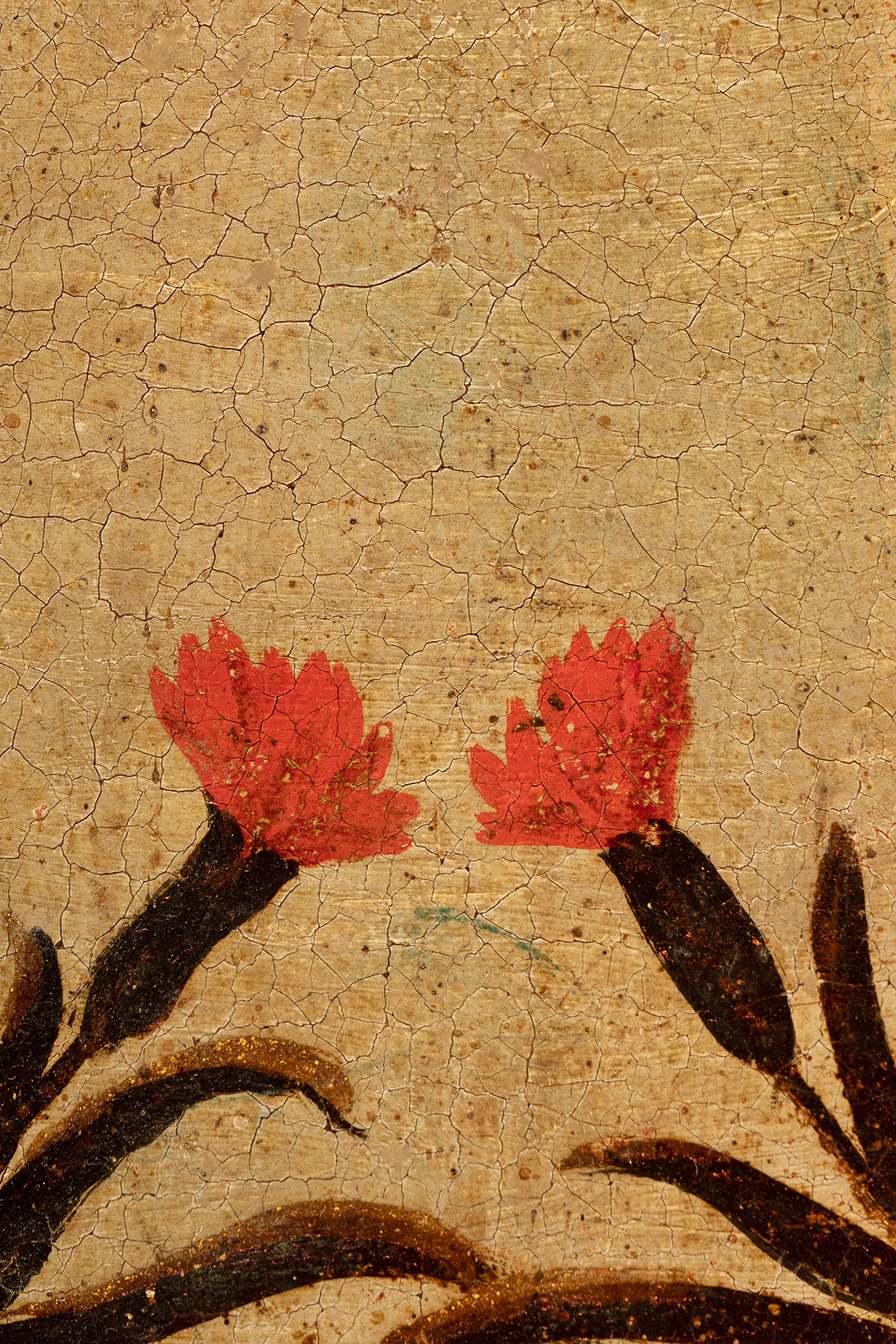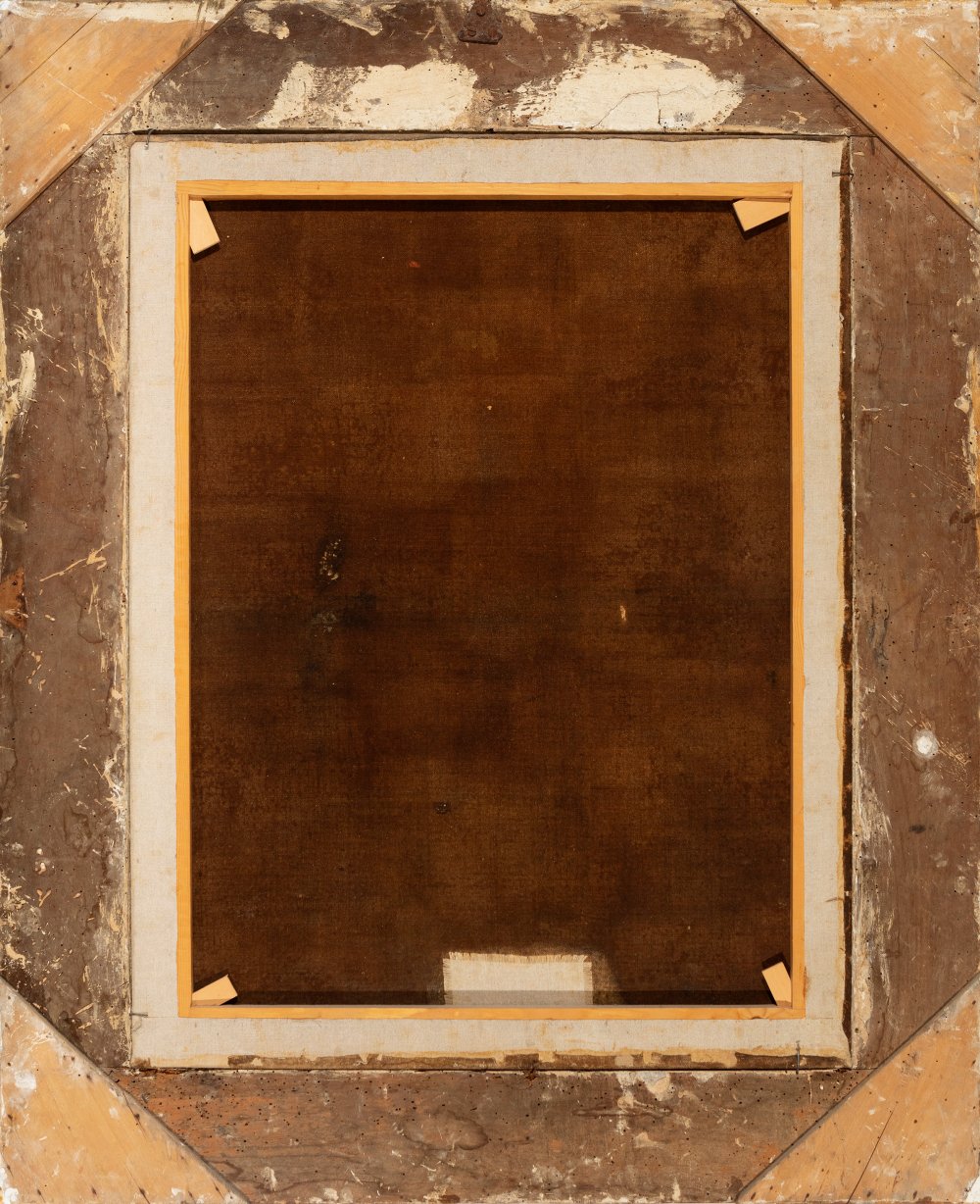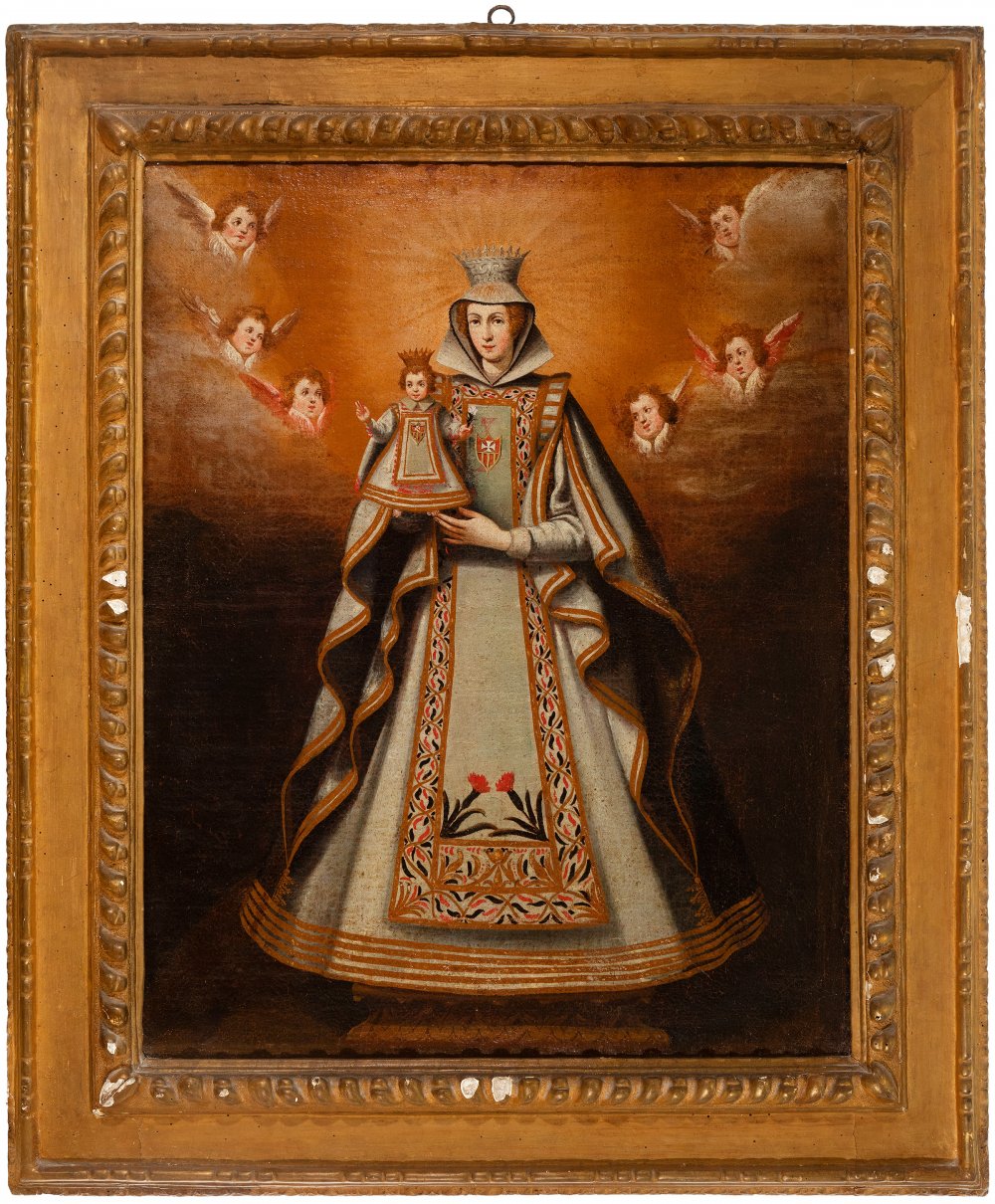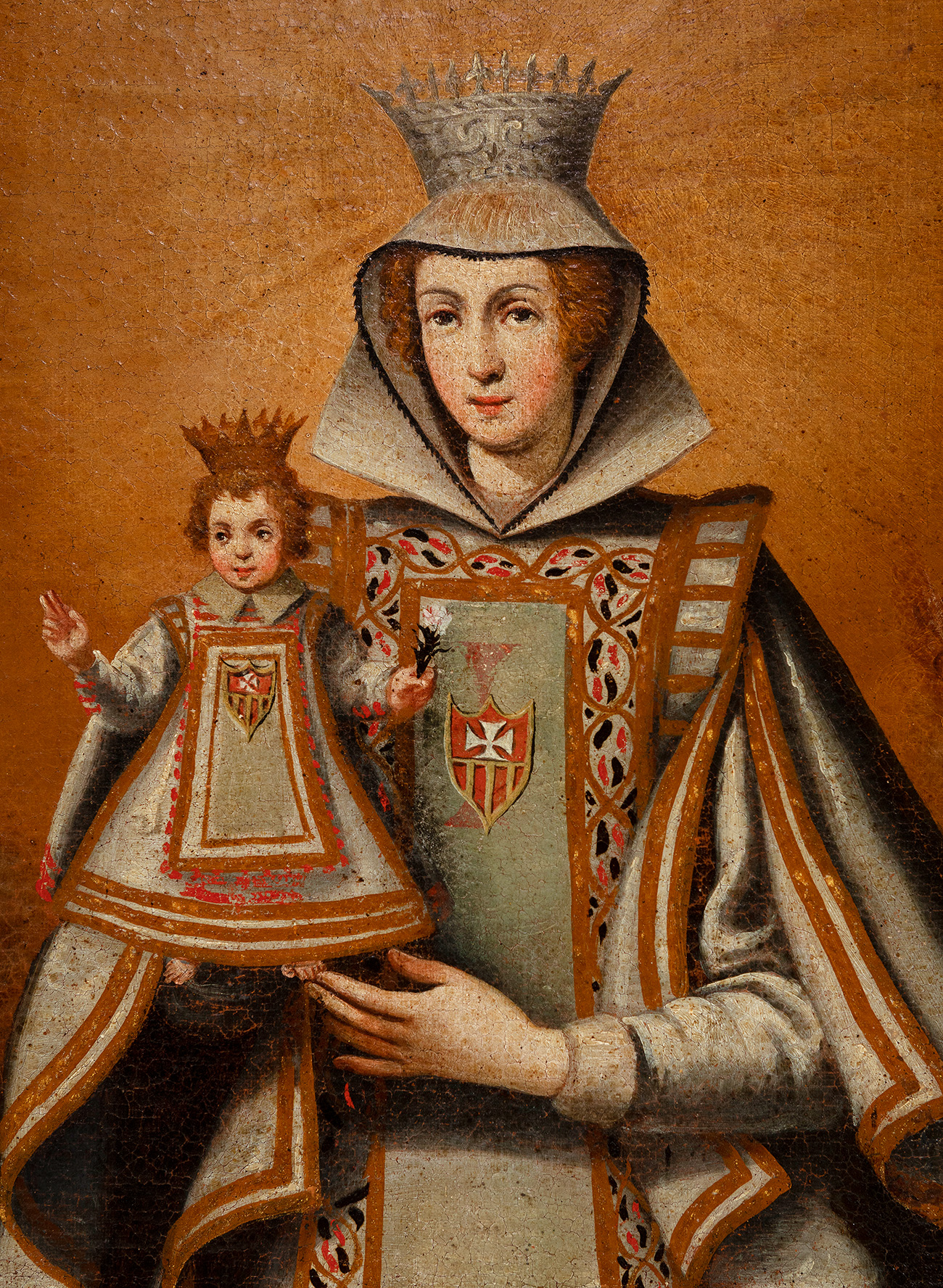27
Catalan school, 18th century."Virgin of La Merced with the coat of arms of Barcelona".Oil on
1/6
Description
Catalan school, 18th century.
"Virgin of La Merced with the coat of arms of Barcelona".
Oil on canvas.
Current frame and reinforced with lateral bands.
Measurements: 91 x 72 cm; 119 x 100 cm (frame).
The Marian invocation of the Virgin of La Merced with the Child Jesus in her arms has been represented in a studied composition governed by symmetry and simplicity. The white tunic and mantle, in their conical shape, give the image great solemnity. The gazes of the seraphim arranged in a semicircle, in the manner of a break in glory, converge on the Virgin's soft-featured countenance. The Child Jesus, also crowned, adopts the gesture of blessing and wears a replica of the Marian mantle, edged in gold. The coat of arms of Barcelona appears on the chest of the tunic. Stylistically, the painting belongs to the transitional period between Baroque and Neoclassicism.
Devotion to the Virgin of Mercy originated in Catalonia. The Order of Mercy was founded around her, initiated by Saint Peter Nolasco at the beginning of the 13th century. It was precisely the Mercedarian monks who spread her cult throughout Spain, France and Italy from that date onwards. The iconography for the representations of the Virgin of Mercy acquired its definitive form in the 16th century, which in the Baroque period moved towards more dynamic representations, with breaks in glory. In this case, the composition is ordered, distributed from the angelic court that crowns the Virgin, and the ancient symbolisms referring to redeemed sinners are removed, reducing the iconography to the elementary.
"Virgin of La Merced with the coat of arms of Barcelona".
Oil on canvas.
Current frame and reinforced with lateral bands.
Measurements: 91 x 72 cm; 119 x 100 cm (frame).
The Marian invocation of the Virgin of La Merced with the Child Jesus in her arms has been represented in a studied composition governed by symmetry and simplicity. The white tunic and mantle, in their conical shape, give the image great solemnity. The gazes of the seraphim arranged in a semicircle, in the manner of a break in glory, converge on the Virgin's soft-featured countenance. The Child Jesus, also crowned, adopts the gesture of blessing and wears a replica of the Marian mantle, edged in gold. The coat of arms of Barcelona appears on the chest of the tunic. Stylistically, the painting belongs to the transitional period between Baroque and Neoclassicism.
Devotion to the Virgin of Mercy originated in Catalonia. The Order of Mercy was founded around her, initiated by Saint Peter Nolasco at the beginning of the 13th century. It was precisely the Mercedarian monks who spread her cult throughout Spain, France and Italy from that date onwards. The iconography for the representations of the Virgin of Mercy acquired its definitive form in the 16th century, which in the Baroque period moved towards more dynamic representations, with breaks in glory. In this case, the composition is ordered, distributed from the angelic court that crowns the Virgin, and the ancient symbolisms referring to redeemed sinners are removed, reducing the iconography to the elementary.
Auction Details
Shipping
T&Cs & Important Info
Ask seller a question
Catalan school, 18th century.
"Virgin of La Merced with the coat of arms of Barcelona".
Oil on canvas.
Current frame and reinforced with lateral bands.
Measurements: 91 x 72 cm; 119 x 100 cm (frame).
The Marian invocation of the Virgin of La Merced with the Child Jesus in her arms has been represented in a studied composition governed by symmetry and simplicity. The white tunic and mantle, in their conical shape, give the image great solemnity. The gazes of the seraphim arranged in a semicircle, in the manner of a break in glory, converge on the Virgin's soft-featured countenance. The Child Jesus, also crowned, adopts the gesture of blessing and wears a replica of the Marian mantle, edged in gold. The coat of arms of Barcelona appears on the chest of the tunic. Stylistically, the painting belongs to the transitional period between Baroque and Neoclassicism.
Devotion to the Virgin of Mercy originated in Catalonia. The Order of Mercy was founded around her, initiated by Saint Peter Nolasco at the beginning of the 13th century. It was precisely the Mercedarian monks who spread her cult throughout Spain, France and Italy from that date onwards. The iconography for the representations of the Virgin of Mercy acquired its definitive form in the 16th century, which in the Baroque period moved towards more dynamic representations, with breaks in glory. In this case, the composition is ordered, distributed from the angelic court that crowns the Virgin, and the ancient symbolisms referring to redeemed sinners are removed, reducing the iconography to the elementary.
"Virgin of La Merced with the coat of arms of Barcelona".
Oil on canvas.
Current frame and reinforced with lateral bands.
Measurements: 91 x 72 cm; 119 x 100 cm (frame).
The Marian invocation of the Virgin of La Merced with the Child Jesus in her arms has been represented in a studied composition governed by symmetry and simplicity. The white tunic and mantle, in their conical shape, give the image great solemnity. The gazes of the seraphim arranged in a semicircle, in the manner of a break in glory, converge on the Virgin's soft-featured countenance. The Child Jesus, also crowned, adopts the gesture of blessing and wears a replica of the Marian mantle, edged in gold. The coat of arms of Barcelona appears on the chest of the tunic. Stylistically, the painting belongs to the transitional period between Baroque and Neoclassicism.
Devotion to the Virgin of Mercy originated in Catalonia. The Order of Mercy was founded around her, initiated by Saint Peter Nolasco at the beginning of the 13th century. It was precisely the Mercedarian monks who spread her cult throughout Spain, France and Italy from that date onwards. The iconography for the representations of the Virgin of Mercy acquired its definitive form in the 16th century, which in the Baroque period moved towards more dynamic representations, with breaks in glory. In this case, the composition is ordered, distributed from the angelic court that crowns the Virgin, and the ancient symbolisms referring to redeemed sinners are removed, reducing the iconography to the elementary.
29th December - Old Masters
Sale Date(s)
Venue Address
Aragón 346, Barcelona
Calle Velázquez 7, Madrid
Carrer de Cirilo Amorós 55, Valencia
Barcelona
08009
Spain
General delivery information available from the auctioneer
Setdart offers Worldwide shipping
PICK UP IN ROOM: You can come and pick up your lots in our offices (Barcelona, Madrid or Valencia). At the moment of the withdrawal, you will be able to accept the current conditions of the lot by means of a document that you will sign.
YOU CAN SEND ANOTHER PERSON TO PICK UP: This person must present a signed authorization that you can find in our web page by accessing from BUY AT SETDART- LOGISTICS-DOWNLOAD AUTHORIZATION DOCUMENT. You can also send an e-mail with the requested data in AUTHORIZATION DOCUMENT to admin@setdart.com
Important Information
25% buyer´s premium
21% buyer´s premium at www.setdart.com













